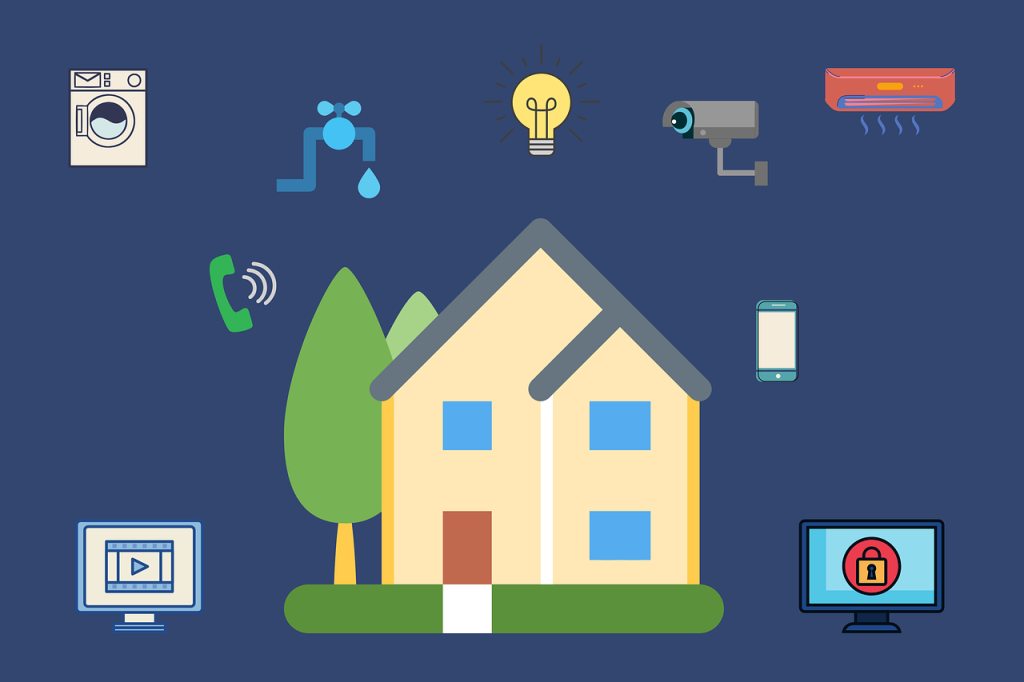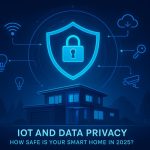Affordable Automation for Everyday Living
Creating a smart home doesn’t have to be expensive. While it’s easy to assume home automation is only for tech enthusiasts with deep pockets, the truth is you can build a functional, convenient, and impressive smart home for less than $200. With a bit of planning and smart choices, you can automate everyday tasks, boost home security, and add a touch of futuristic comfort—all without breaking the bank.
In this guide, we’ll walk you through the steps to build a smart home on a tight budget, focusing on devices that are affordable, reliable, and easy to install. Let’s get started.
Step 1: Set Your Priorities
Before you start buying gadgets, ask yourself:
- What do I want to automate? (Lighting, security, energy saving?)
- How important is voice control?
- Do I need remote access or automation routines?
Focusing on 2–3 key features—like lighting, security, or voice assistants—will help you get the most value from your limited budget.
Step 2: Get a Smart Speaker or Hub ($25–$50)
Budget pick:
- Amazon Echo Dot (5th Gen) — ~$30
- Google Nest Mini (2nd Gen) — ~$30
Your smart assistant is the brain of your smart home. With Alexa or Google Assistant, you can control devices with your voice, create routines, and even control things remotely. These devices often go on sale for under $25, making them a perfect starting point.
👉 Tip: No need for a dedicated hub if you’re using Wi-Fi-enabled devices. Many budget smart products work directly with Alexa or Google Home apps.
Step 3: Add Smart Plugs ($10–$25 each)
Smart plugs are the ultimate entry-level upgrade. They let you control anything you plug into them—lamps, coffee makers, fans, etc.—using your voice or phone.
Top affordable options:
- Kasa Smart Plug Mini (2-pack) — ~$20
- Govee Smart Plugs — ~$25 for 4-pack
With smart plugs, you can set timers, automate your lights, or even make it seem like someone’s home when you’re away.
Smart plugs are one of the cheapest ways to automate any device.
Step 4: Install Smart Bulbs ($10–$15 each)
Smart bulbs let you control brightness, color, and schedules. Many budget options work via Wi-Fi and don’t require a hub.
Great choices under $15:
- Wyze Bulb Color — ~$12
- TP-Link Kasa Smart Bulb — ~$13
- Govee Smart Bulbs — ~$20 for 2-pack
You can group lights by room, create mood lighting, or set lights to slowly brighten in the morning as a wake-up routine.
Step 5: Add a Smart Security Camera ($25–$50)
A smart home isn’t just about comfort—it’s also about safety. Luckily, there are great indoor and outdoor cameras that won’t cost much.
Budget camera options:
- Wyze Cam v3 — ~$35 (1080p, night vision, two-way audio)
- Blink Mini — ~$30 (Amazon ecosystem)
These cameras offer live streaming, motion alerts, and cloud or local storage. You can get alerts when someone’s at the door, or check on pets while you’re out.
Step 6: Smart Sensors (Optional, ~$15–$25)
If budget allows, consider motion sensors or contact sensors for extra automation.
- Aqara Door & Window Sensor — ~$18
- Sonoff PIR Motion Sensor — ~$12–$20
These can trigger lights, send alerts when doors open, or act as part of a basic security setup.
Sample Smart Home Setup Under $200
| Device | Price |
|---|---|
| Echo Dot (5th Gen) | $30 |
| Kasa Smart Plug Mini (2-pack) | $20 |
| Wyze Bulb Color (2-pack) | $24 |
| Wyze Cam v3 | $35 |
| Govee Smart Plugs (2-pack) | $15 |
| Govee Smart Bulbs (2-pack) | $20 |
| Motion Sensor (Sonoff) | $15 |
| Total | $159 |
Even with this budget-friendly setup, you’ll have:
- Voice control and automation
- Smart lighting
- Smart appliance control
- Indoor security camera
- Motion-activated routines
And you’ll still have room for another device or cloud subscription if needed.
Ways to Save Even More
- Buy bundles: Many brands sell multi-packs at a lower cost per unit.
- Look for deals: Amazon Prime Day, Black Friday, and similar sales often slash prices by 30–60%.
- Use refurbished gear: Certified refurbished smart home products often come with warranties and big discounts.
- Skip the extras: Stick to Wi-Fi devices so you don’t need a separate hub.
Worth Considering for the Future
Once your budget allows, consider adding:
- Smart thermostat for energy savings
- Smart locks for keyless entry
- Video doorbell for front-door monitoring
- Smart blinds or curtains
- Water leak sensors
These upgrades can push your smart home to the next level—but starting small is the smartest way to go.
Final Thoughts
You don’t need a massive budget or a tech degree to create a connected home. With just $200—or less—you can enjoy the convenience, security, and fun of home automation. Whether you’re dipping your toes in or planning to build on it later, this starter setup brings smart living within reach for anyone.
New to IoT? Start here to understand how it all connects.
- Automated Online Trading: How IoT is Redefining Financial Markets
 Introduction automated online trading In a world where milliseconds can decide millions, the fusion of Internet of Things (IoT) technology and automated online trading is reshaping global finance. What once relied solely on human judgment now increasingly depends on connected machines, real-time data, and predictive algorithms. From weather sensors influencing agricultural trades to smart logistics…
Introduction automated online trading In a world where milliseconds can decide millions, the fusion of Internet of Things (IoT) technology and automated online trading is reshaping global finance. What once relied solely on human judgment now increasingly depends on connected machines, real-time data, and predictive algorithms. From weather sensors influencing agricultural trades to smart logistics… - The Role of Linux in IoT: Powering the Connected World
 The Internet of Things (IoT) is everywhere—from smart homes and wearable devices to industrial automation and self-driving cars. Behind the scenes, one operating system plays a surprisingly dominant role: Linux. Known for its stability, flexibility, and open-source nature, Linux has become the backbone of countless IoT devices and platforms. But what makes Linux so well-suited…
The Internet of Things (IoT) is everywhere—from smart homes and wearable devices to industrial automation and self-driving cars. Behind the scenes, one operating system plays a surprisingly dominant role: Linux. Known for its stability, flexibility, and open-source nature, Linux has become the backbone of countless IoT devices and platforms. But what makes Linux so well-suited… - The Smart Home Revolution in 2025: How IoT is Transforming Everyday Living
 In the past decade, the vision of a truly smart home has moved from futuristic fantasy to everyday reality. As we step into 2025, the Internet of Things (IoT) has matured into a robust ecosystem, connecting appliances, security systems, lighting, and even entertainment devices under one seamless digital roof. The result? Homes that are safer,…
In the past decade, the vision of a truly smart home has moved from futuristic fantasy to everyday reality. As we step into 2025, the Internet of Things (IoT) has matured into a robust ecosystem, connecting appliances, security systems, lighting, and even entertainment devices under one seamless digital roof. The result? Homes that are safer,… - IoT and Data Privacy: How Safe Is Your Smart Home in 2025? – IoT Security
 The smart home revolution has made everyday life more convenient than ever. From voice assistants that control the lights to security cameras that send alerts directly to your phone, connected devices have become part of our daily routines. But with this convenience comes an important question: how safe is your personal data in a world…
The smart home revolution has made everyday life more convenient than ever. From voice assistants that control the lights to security cameras that send alerts directly to your phone, connected devices have become part of our daily routines. But with this convenience comes an important question: how safe is your personal data in a world… - Geofencing in Smart Homes: Automating Your Life Based on Location
 Imagine pulling into your driveway after a long day—your porch lights switch on, the thermostat adjusts to the perfect temperature, and your door unlocks automatically. This isn’t science fiction—it’s geofencing, one of the most powerful yet underused tools in smart home automation. What Is Geofencing? Geofencing creates a virtual boundary around a physical location—such as…
Imagine pulling into your driveway after a long day—your porch lights switch on, the thermostat adjusts to the perfect temperature, and your door unlocks automatically. This isn’t science fiction—it’s geofencing, one of the most powerful yet underused tools in smart home automation. What Is Geofencing? Geofencing creates a virtual boundary around a physical location—such as…







